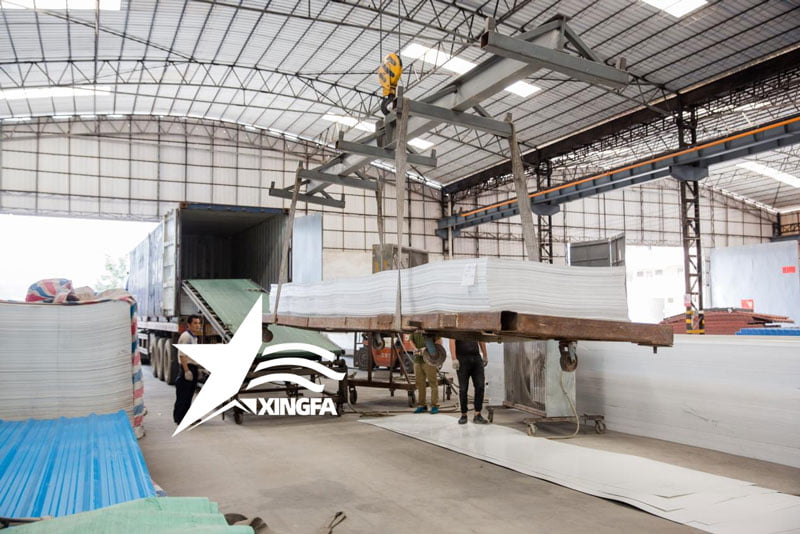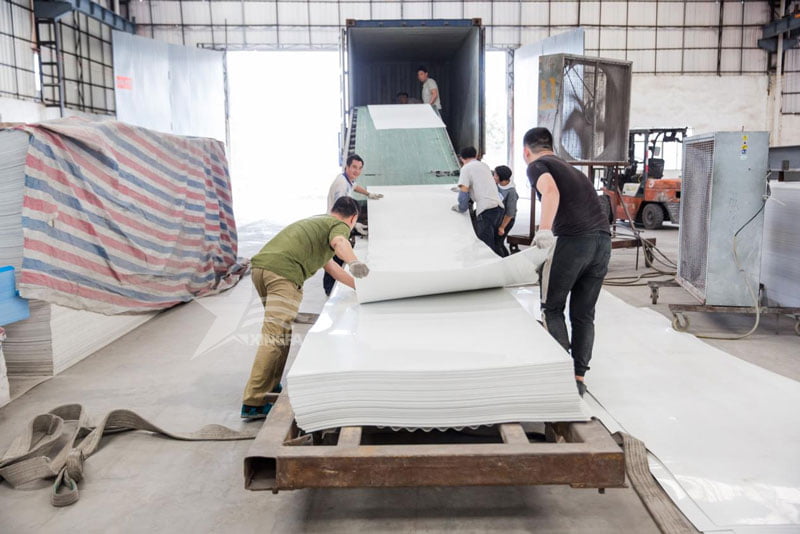Synthetic resin tiles are an important component of building materials, and special attention should be paid to their transportation to prevent damage and affect their effectiveness. Today, I will share a few tips for transporting synthetic resin tiles:

1. Loading and unloading:
During the loading and unloading process of synthetic resin tiles, appropriate machinery should be used as much as possible to keep the tiles level. Some delivery personnel may use throwing methods to achieve quick loading and unloading for tiles less than 1 meter long. This method is not advisable as it can easily cause damage and breakage. Therefore, when loading and unloading synthetic resin tiles, they should be handled with care to avoid excessive force and damage.
In addition, synthetic resin tiles are large items and are usually placed on the bottom shelf of the transport vehicle. If other goods are placed on top, workers must be careful when handling the goods to prevent scratching the surface and edges of the synthetic resin tiles. This situation is more likely to occur if there are multiple transfers, increasing the chances of damage. Therefore, when loading and unloading resin tiles, they should be placed on the bottom of the truck and avoid contact with other goods as much as possible.

2. Transportation vehicles:
When choosing transportation vehicles, factors such as the size, quantity, and distance of the synthetic resin tiles should be considered. Generally, trucks or containers are used for transporting synthetic resin tiles. When choosing a truck, the load capacity and stability of the truck should be considered to ensure that the tiles do not slide or overturn during transportation. When choosing a container, the size should be able to accommodate the resin tiles, and sturdy fixing devices should be used to secure the tiles inside the container to prevent shifting or sliding during transportation.
3. Hoisting:
Special attention should also be paid when hoisting the resin tiles for installation on the roof. It is recommended not to stack more than 20 tiles and to keep them level. When hoisting resin tiles, it is best to use a three-point hoisting method to ensure that the tiles are balanced and suspended in the air. Especially for longer tiles, extra caution is needed during hoisting. If conditions allow, welding horizontal steel structures can be used as auxiliary lifting tools to increase stability during hoisting.

In conclusion, special attention is needed during the transportation of synthetic resin tiles to protect their appearance, quality, safety, and stability. Therefore, when transporting resin tiles, it is necessary to choose appropriate loading and unloading machinery, stable and reliable transportation vehicles, and take appropriate measures during hoisting. Only in this way can the resin tiles be transported without damage. Don’t forget to like and bookmark this article, and stay tuned for more knowledge about resin tiles in the next issue.
